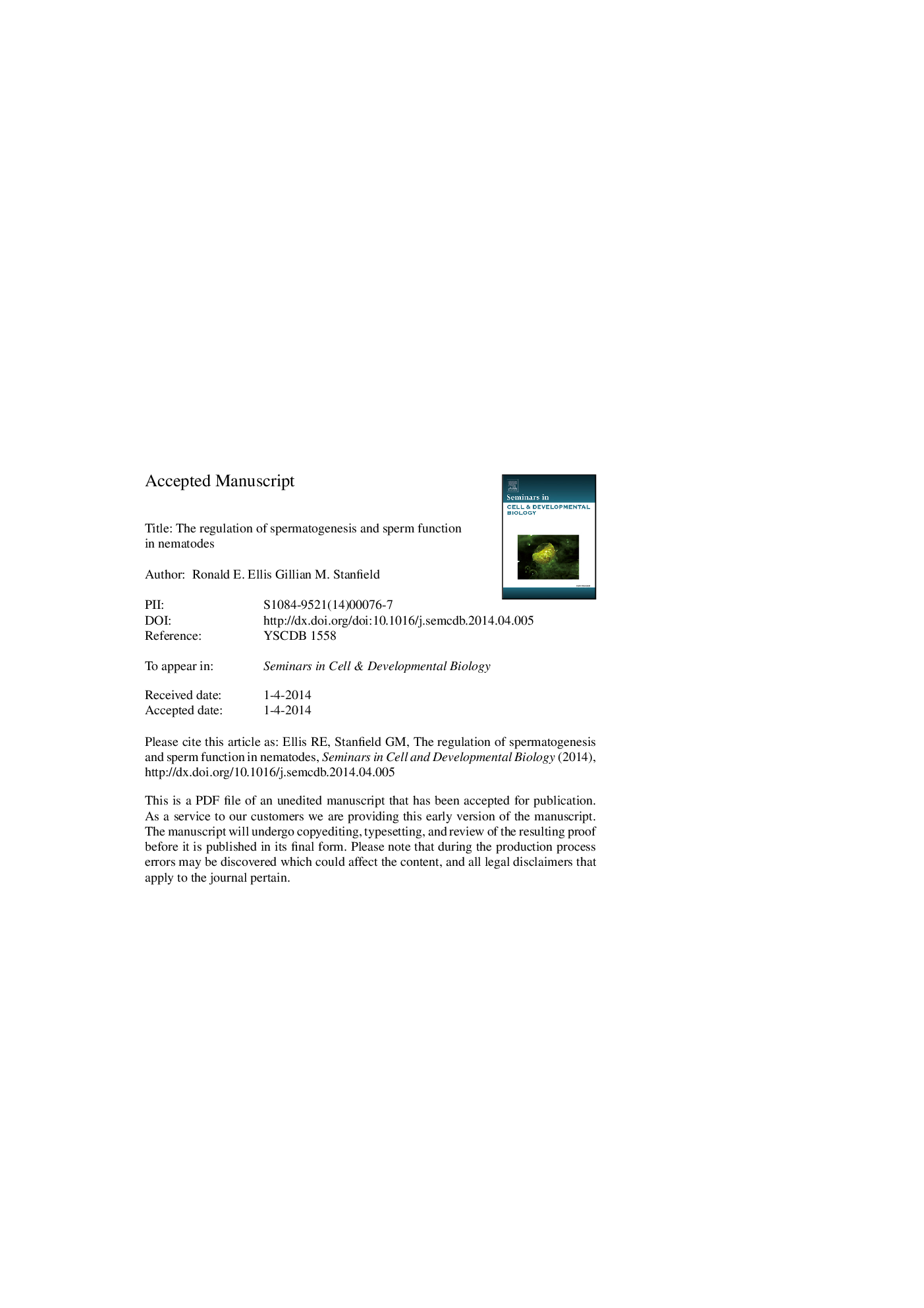| Article ID | Journal | Published Year | Pages | File Type |
|---|---|---|---|---|
| 8480757 | Seminars in Cell & Developmental Biology | 2014 | 54 Pages |
Abstract
In the nematode C. elegans, both males and self-fertile hermaphrodites produce sperm. As a result, researchers have been able to use a broad range of genetic and genomic techniques to dissect all aspects of sperm development and function. Their results show that the early stages of spermatogenesis are controlled by transcriptional and translational processes, but later stages are dominated by protein kinases and phosphatases. Once spermatids are produced, they participate in many interactions with other cells - signals from the somatic gonad determine when sperm activate and begin to crawl, signals from the female reproductive tissues guide the sperm, and signals from sperm stimulate oocytes to mature and be ovulated. The sperm also show strong competitive interactions with other sperm and oocytes. Some of the molecules that mediate these processes have conserved functions in animal sperm, others are conserved proteins that have been adapted for new roles in nematode sperm, and some are novel proteins that provide insights into evolutionary change. The advent of new techniques should keep this system on the cutting edge of research in cellular and reproductive biology.
Related Topics
Life Sciences
Biochemistry, Genetics and Molecular Biology
Cell Biology
Authors
Ronald E. Ellis, Gillian M. Stanfield,
